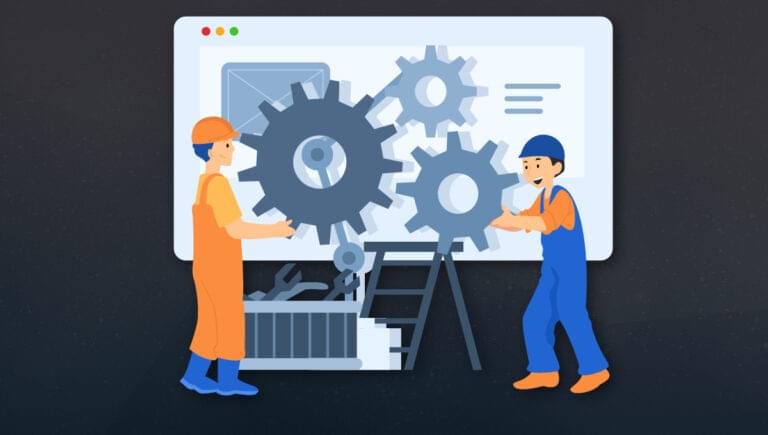Best Practices for AWS EC2 Auto Scaling Configuration

Key Takeaways
- AWS EC2 Auto Scaling is a powerful feature that allows automatic adjustment of the number of EC2 instances in your infrastructure based on demand. It consists of three main components: a Launch Template, an Auto Scaling Group, and Scaling Policies.
- Setting up Auto Scaling involves creating a launch template, creating an Auto Scaling group with the launch template, and configuring scaling policies. AWS CLI can be used to create these components. Monitoring and testing the setup is crucial to ensure it’s working as expected.
- Auto Scaling offers several benefits including ensuring the right amount of compute capacity, cost-effectiveness, and enhancing application’s availability and fault tolerance. It can be used with a variety of AWS services and there is no additional charge for Auto Scaling.
Amazon Web Services (AWS) provides a wide range of cloud computing services, including Elastic Compute Cloud (EC2) for scalable computing resources. EC2 Auto Scaling is a powerful feature that allows you to automatically adjust the number of EC2 instances in your infrastructure based on demand. In this tutorial, we’ll cover the basics of AWS EC2 Auto Scaling and provide step-by-step instructions on how to set it up.
Contents:
- Introduction to AWS EC2 Auto Scaling
- EC2 Auto Scaling Prerequisites
- Creating an EC2 Launch Template
- Creating an Auto Scaling Group
- Configuring Scaling Policies
- Monitoring and Testing
- EC2 Auto Scaling Cheat Sheet
Introduction to AWS EC2 Auto Scaling
EC2 Auto Scaling helps you maintain the optimal number of instances in your infrastructure by automatically scaling the number of instances up or down based on demand. This ensures that you have enough resources to handle traffic spikes and reduces costs by releasing unneeded instances during periods of low demand.
There are three main components to EC2 Auto Scaling:
- Launch Template: a configuration template that specifies the instance type, AMI, and other settings for the instances that will be launched.
- Auto Scaling Group: a group of instances that share the same launch template and scaling policies.
- Scaling Policies: rules that determine when and how to scale the number of instances in the Auto Scaling group.
EC2 Auto Scaling Prerequisites
Before we begin, make sure you have the following:
- An AWS account with the necessary permissions to create and manage EC2 instances, launch templates, and Auto Scaling groups.
- AWS CLI installed and configured with your AWS credentials.
- A basic understanding of AWS EC2 and its components.
Creating an EC2 Launch Template
A launch template is a reusable configuration that specifies the settings for instances launched in an Auto Scaling group. To create a launch template, follow these steps:
- Sign in to the AWS Management Console and navigate to the EC2 Dashboard.
- In the left-hand menu, click on Launch Templates under Instances.
- Click the Create launch template button.
- Fill in the required fields, such as template name, description, and Amazon Machine Image (AMI) ID. You can find the AMI ID by searching for the desired instance type in the Instances section of the EC2 Dashboard.
- Choose an instance type, such as
t2.microorm5.large, based on your requirements. - Configure additional settings, such as storage, security groups, and key pairs, as needed.
- Click Create launch template to save your configuration.
You can also create a launch template using the AWS CLI with the following command:
aws ec2-template --launch-template-name MyLaunchTemplate --version-description "Initial version" --launch-template-data '{"ImageId":"ami-0c94855ba95b798c7","InstanceType":"t2.micro","KeyName":"my-key-pair"}'
Replace the values for ImageId, InstanceType, and KeyNamewith your desired settings.
Creating an Auto Scaling Group
An Auto Scaling group is a collection of instances that share the same launch template and scaling policies. To create an Auto Scaling group, follow these steps:
- In the AWS Management Console, navigate to the EC2 Dashboard.
- In the left-hand menu, click on Auto Scaling groups under Auto Scaling.
- Click the Create an Auto Scaling group button.
- Select the launch template you created earlier and click Next.
- Choose a name for your Auto Scaling group and configure the desired VPC and subnets.
- Set the desired minimum, maximum, and desired number of instances for your Auto Scaling group.
- Configure any additional settings, such as load balancing and health checks, as needed.
- Click Create Auto Scaling group to save your configuration.
You can also create an Auto Scaling group using the AWS CLI with the following command:
aws Auto Scaling create-auto-scaling-group --auto-scaling-group-name MyAuto ScalingGroup --launch-template "LaunchTemplateName=MyLaunchTemplate" --min-size 1 --max-size 3 --desired-capacity 2 --vpc-zone-identifier "subnet-12345678,subnet-abcdefgh"
Replace the values for LaunchTemplateName, min-size, max-size, desired-capacity, and vpc-zone-identifier with your desired settings.
Configuring Scaling Policies
Scaling policies determine when and how to scale the number of instances in your Auto Scaling group. There are three types of scaling policies:
- Target Tracking Scaling: automatically adjusts the number of instances based on a predefined metric, such as average CPU utilization or network traffic.
- Step Scaling: increases or decreases the number of instances in steps, based on CloudWatch alarms.
- Simple Scaling: increases or decreases the number of instances based on a single CloudWatch alarm.
In this tutorial, we’ll focus on target tracking scaling policies.
To create a target tracking scaling policy, follow these steps:
- In the AWS Management Console, navigate to the EC2 Dashboard.
- In the left-hand menu, click on Auto Scaling groups under Auto Scaling.
- Select your Auto Scaling group and click on the Scaling policies tab.
- Click the Create scaling policy button.
- Choose Target tracking scaling policy as the policy type.
- Enter a name for your scaling policy.
- Select a predefined metric, such as Average CPU utilization or Request count per target, and set the target value.
- Configure any additional settings, such as cooldown periods and instance warm-up times, as needed.
- Click Create to save your scaling policy.
You can also create a target tracking scaling policy using the AWS CLI with the following command:
aws Auto Scaling put-scaling-policy --policy-name MyTargetTrackingPolicy --auto-scaling-group-name MyAuto ScalingGroup --policy-type TargetTrackingScaling --target-tracking-configuration '{"PredefinedMetricSpecification": {"PredefinedMetricType": "ASGAverageCPUUtilization"},"TargetValue": 50}'
Replace the values for policy-name, auto-scaling-group-name, PredefinedMetricType, and TargetValue with your desired settings.
Monitoring and Testing
After setting up your Auto Scaling group and scaling policies, it’s essential to monitor and test your configuration to ensure it’s working as expected.
To monitor your Auto Scaling group, you can use Amazon CloudWatch to track metrics such as CPU utilization, network traffic, and instance counts. You can also set up CloudWatch alarms to notify you when specific thresholds are breached.
To test your Auto Scaling configuration, you can simulate traffic spikes or resource usage increases and observe how your Auto Scaling group responds. You can also manually adjust the desired capacity of your Auto Scaling group to see how it scales up or down.
Conclusion
In this tutorial, we covered the basics of AWS EC2 Auto Scaling, including creating launch templates, Auto Scaling groups, and scaling policies. By implementing Auto Scaling in your infrastructure, you can ensure that you have enough resources to handle traffic spikes and reduce costs by releasing unneeded instances during periods of low demand.
EC2 Auto Scaling Cheat Sheet
| Component | Description | Options |
|---|---|---|
| Launch Template | A reusable configuration that specifies the settings for instances launched in an Auto Scaling group. | AMI ID, Instance Type, Key Pair, Security Groups, Storage, etc. |
| Auto Scaling Group | A collection of instances that share the same launch template and scaling policies. | Launch Template, VPC, Subnets, Min/Max/Desired Instances, Load Balancing, Health Checks, etc. |
| Scaling Policies | Rules that determine when and how to scale the number of instances in the Auto Scaling group. | Target Tracking, Step Scaling, Simple Scaling, Predefined Metrics, Target Values, Cooldown Periods, Instance Warm-up, etc. |
Frequently Asked Questions (FAQs) on AWS EC2 Auto Scaling Configuration
What are the key benefits of using AWS EC2 Auto Scaling?
AWS EC2 Auto Scaling offers several benefits. Firstly, it ensures that your application always has the right amount of compute capacity. It automatically increases the number of EC2 instances during demand spikes to maintain performance and decreases capacity during demand lulls to minimize costs. Secondly, it’s cost-effective as you only pay for what you use. Lastly, it enhances your application’s availability and fault tolerance.
How does AWS EC2 Auto Scaling work?
AWS EC2 Auto Scaling works by monitoring your applications and automatically adjusting capacity to maintain steady, predictable performance at the lowest possible cost. It uses Amazon CloudWatch to monitor your applications. When a defined threshold is crossed, an alarm is triggered, and an Auto Scaling policy takes effect.
How can I set up AWS EC2 Auto Scaling?
Setting up AWS EC2 Auto Scaling involves several steps. First, you need to create a launch configuration that specifies the instance type, AMI, security group, and other settings. Then, you create an Auto Scaling group and attach the launch configuration to it. You also need to set up scaling policies to determine when to scale out or in.
What are some best practices for AWS EC2 Auto Scaling?
Some best practices for AWS EC2 Auto Scaling include: setting appropriate thresholds for scaling policies, using multiple smaller instances instead of a single large instance, and testing your Auto Scaling setup under various load conditions. It’s also recommended to use Auto Scaling with Elastic Load Balancing to distribute traffic to multiple instances.
Can I use AWS EC2 Auto Scaling with other AWS services?
Yes, AWS EC2 Auto Scaling can be used with a variety of AWS services. For instance, it can be used with Amazon RDS to scale databases, with Amazon S3 for storage, and with AWS Lambda for serverless computing.
How is AWS EC2 Auto Scaling billed?
With AWS EC2 Auto Scaling, you pay for the EC2 instances that are launched and any other AWS services that are used. There is no additional charge for Auto Scaling.
How can I monitor AWS EC2 Auto Scaling?
You can monitor AWS EC2 Auto Scaling using Amazon CloudWatch, which provides metrics for CPU utilization, network traffic, and more. You can also set alarms to notify you when certain thresholds are crossed.
What is the difference between manual scaling and dynamic scaling in AWS EC2 Auto Scaling?
Manual scaling involves manually setting the number of instances in your Auto Scaling group, while dynamic scaling adjusts the number of instances automatically based on demand patterns.
Can I control when AWS EC2 Auto Scaling launches or terminates instances?
Yes, you can control when AWS EC2 Auto Scaling launches or terminates instances by setting up scheduled actions. This allows you to increase or decrease the number of instances based on predictable load changes.
What happens if an instance in an Auto Scaling group fails a health check?
If an instance in an Auto Scaling group fails a health check, AWS EC2 Auto Scaling automatically replaces the instance to maintain the desired capacity. This ensures high availability and fault tolerance for your applications.
Matt is the co-founder of SitePoint, 99designs and Flippa. He lives in Vancouver, Canada.
Published in
·CMS & Frameworks·Development Environment·Open Source·Patterns & Practices·Performance & Scaling·PHP·Programming·Software·Web·January 24, 2014




